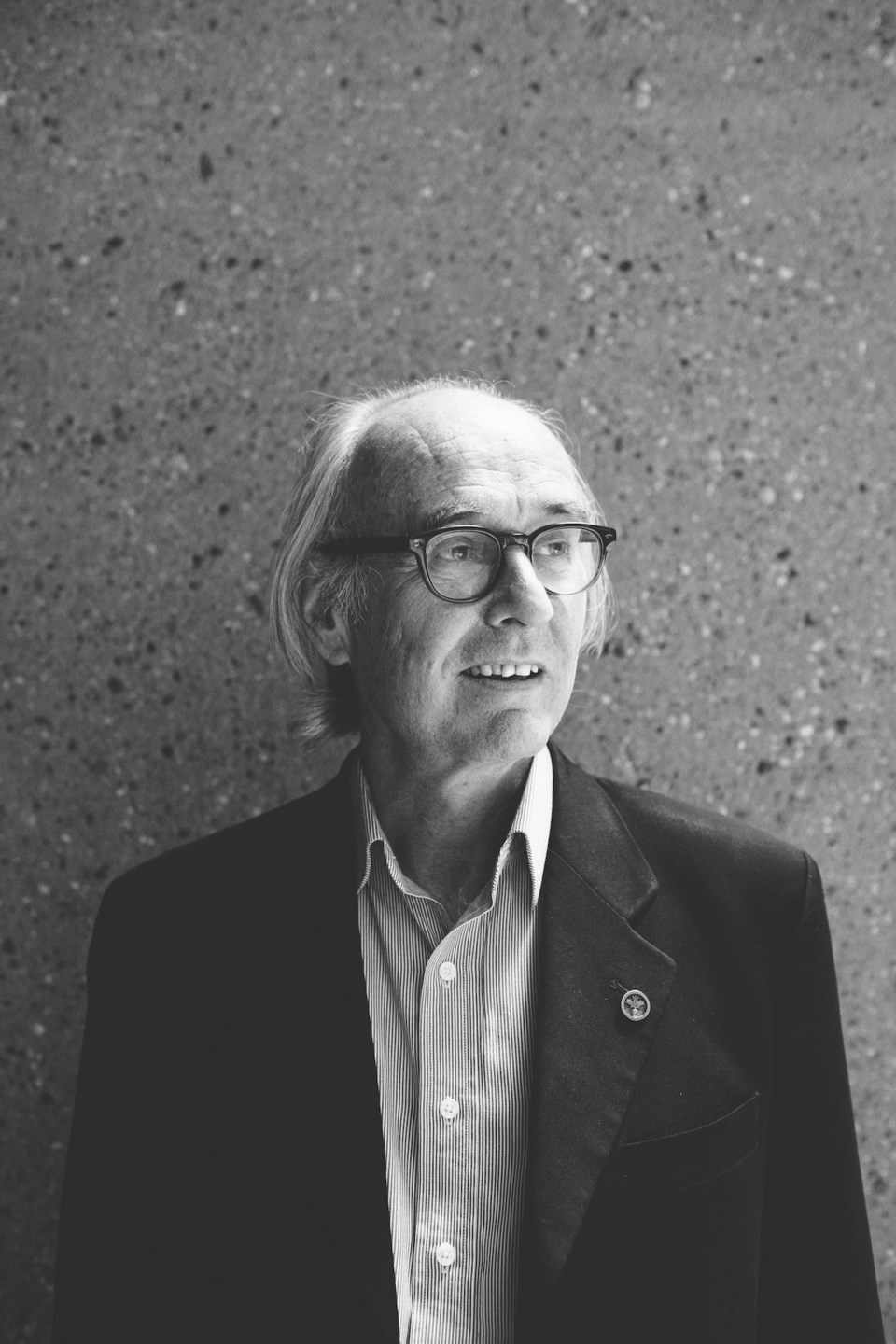Countless other mothers, fathers, brothers, sisters, lovers and children will go to bed Christmas night hoping against hope that their loved one isn’t added to the staggering statistics of those lost.
The crisis intensifies
According to the latest preliminary data released by the B.C. Coroners Service, at least 201 people died from toxic drug poisoning in October.
A total of 1,782 people died in the first 10 months of 2021.
That is the highest number of deaths due to drug toxicity ever recorded in the province.
More than 8,300 people have died since the provincial government declared the ‘overdose’ deaths a public health emergency in April of 2016.
About 70% of those who died in 2021 were between 30 and 59, and 79% were men.
Only cancer tops illicit drug toxicity deaths in B.C. in terms of years of life lost.
“I cannot stress enough how urgent this emergency has become. A comprehensive plan to ensure access to safe supply for the thousands of B.C. residents dependent on these substances is essential. Shifting from punishment and stigmatizing regime to a decriminalized, health-focused model is also a critical step to reduce suffering and save lives,” said Lisa Lapointe, B.C.’s chief coroner, in a news release on Dec. 9.
Decriminalization?

Donald MacPherson, director of the Canadian Drug Policy Coalition and adjunct professor in the Faculty of Health Sciences at Simon Fraser University, agrees the answer to the current opioid crisis is decriminalization, and then regulation of the drug supply.
In November, the government of B.C. became the first province in Canada to seek an exemption from Health Canada under Section 56(1) of the Controlled Drugs and Substances Act.
If approved, this would remove criminal penalties for people who possess small amounts of illicit drugs for personal use.
The federal government is considering the application.
Decriminalization removes the historically punishing and cruel drug policy that impacts drug users, MacPherson said.
“Criminalization doesn’t work,” he said. “It is harmful, it stigmatizes, it pushes people into the shadows. It increases their risks of overdose, of infectious disease transmission. Criminalizing those especially who have an actual dependency is really harmful,” he said.
Destigmatizing substance use is key.
How did we get here?
“How we got here is really through business decisions that have been made by international organized criminal groups to change the supply of opioids in the illegal drug market from heroin — which has always been prevalent in the west coast of Canada — to fentanyl,” MacPherson said.
Heroin has been displaced by fentanyl, for the most part, he said.
Heroin comes from a crop that must be grown, processed, and transported great distances, whereas fentanyl can be made in a lab, he noted.
“So, although it kills all sorts of its customers, it is still a super profitable business,” he said. “I don’t know anyone who thinks it is going to change.”
A big increase in addiction is not driving the crisis, he stressed; it is driven by a dramatic change in the toxicity in the illegal market.
Were it decriminalized, the minority of drug users who struggle with addiction would be better able to come forward and ask for help, MacPherson said.
“It is trying to divert the criminal justice system, including the police, from the lives of people who use substances — so minimizing police contact.”
The criminal justice system is something you want to avoid if you want to move forward in life, he noted.
“It tends to be a bit of a boat anchor around you if you have a record, if you spend time in remand or in jail — none of these things are good for your self-esteem, your well-being, your health,” he said.
“We think decriminalization would improve engagement of people who use drugs in society and health and well-being and also divert police to other more important policing.”
Obstacles
MacPherson’s criticism of the provincial government is that officials will talk about drug toxicity, but most solutions sound like they are dealing with an addiction problem.
“What they need to start saying loud and clearly is that the drug market is toxic and that drug market is created by our drug policy,” he said. “We uphold a policy of prohibition that continues to create, by definition, an unregulated toxic drug market and that is what they are not saying.”
Our governments are not enacting an emergency response to the crisis. They are enacting a system-building response, he said.
Legalization
“What decriminalization doesn’t do is affect the drug trade — the same drugs are circulating... So then you have to move to saying let’s just regulate these substances, including heroin, so people can have access to an alternative to the toxic drug market,” MacPherson said.
“It is like if you had toxic water or toxic food. You would be replacing the water and replacing the food and stopping the manufacturing and figuring out a way to provide people with pure water and pure food.”
“I am not saying we should not fund more absence-based treatment spots, but we also have to fund methadone, we should be funding heroin-assistant treatment... it is ironically, the one substance where there is 25 years of evidence from Europe that providing heroin users can help stabilize their lives.”
The Ministry of Mental Health and Addictions said that B.C. is already leading the country on providing prescribed safer supply to people.
“We will continue to consider other innovative solutions that help to separate people from the poisoned drug supply,” a spokesperson told The Squamish Chief in an emailed statement.
Our “drug control policy,” doesn’t control the drugs, MacPherson said.
“It creates a free drug market for organized criminals.”
He pointed to the Cullen Commission Inquiry into Money Laundering in B.C. as proof.
“Connecting the dots between the transnational organized criminal groups, the real estate market, money laundering, luxury auto sales and drugs. That is what prohibition creates.”
In response to this, the Ministry of Mental Health and Addictions said that the government “continues to provide law enforcement with the necessary tools to address serious and organized crime related to distribution and profiteering from toxic illegal drugs.”
“Through our ongoing commitment to provincewide specialized anti-trafficking drug units, police will continue to target drug importers and traffickers in order to disrupt transportation and distribution of dangerous illegal substances.”
The Ministry acknowledged in its statement that B.C. and Canada “continue to see the devastating effects of the poisoned illicit drug supply. No words can replace a loved one lost. Our government continues to do everything we can to turn this drug poisoning crisis around.”
“We know that there is a long history of treating addiction as a criminal issue, rather than a health issue and our government is working to change that.”
Asked if the Ministry has enacted an emergency response to the crisis, its spokesperson said the government “has acted urgently” to respond to the poisoned drug crisis through measures that save lives.
“For example, we have more than doubled overdose prevention and safe consumption sites, which saves lives and connects people to services. From January 2018 until the end of July 2021, there have been more than 2.5 million visits, more than 14,000 overdoses responded to and survived, and zero deaths,” the spokesperson said.
The 2021 budget provides $500 million toward mental health and substance use over the next three years, including $132 million to build up treatment and recovery services and $45 million “to ensure the stability of overdose prevention services around the province, support integrated interdisciplinary outreach teams, and increase nursing care,” the Ministry said.
The provincial government is also expanding its prescribed safe supply program, “which will separate even more people from the toxic drug supply.”
While Overdose Prevention Sites save lives, they are a Band-Aid solution, MacPherson said.
“The absurdity is, rather than give you a supply of pure heroin... we say, ‘Bring your drugs, that are probably toxic — 80% of them will have fentanyl in them — and we will stand by while you use in case you get poisoned.’.... It is absurd,” he said. “Why don’t we just say, we have a serious drug poisoning crisis here, please use these drugs — pharmaceutical products — in the right dose.”
For Dr. Shannon McDonald, acting chief medical officer for the First Nations Health Authority (FNHA), an issue with the province’s decriminalization application is that it is for possession of 4.5g of certain drugs or less.
“What about our people who live remotely? And it’s 50 kilometres away to get to their dealers, so they buy more at a time, you know, those kinds of things? So it’s not the perfect answer by any means,” she said.
She too pointed to a need for a safer supply noting that a big concern now is mixed drugs that are causing poisonings.
If you live in a remote community and are drug poisoned, the ambulance isn’t going to make it to you in time, she said.
“There are a lot more drugs in remote and isolated areas than there ever have been,” she said. “It’s really scary.”
Decriminalization as decolonizing
While Indigenous residents make up 3.3% of the population in B.C., they made up 14.7% of toxic drug deaths in 2020, according to the FNHA.
The data is only for status First Nations people, because the health authority doesn’t have data on Métis folks.
Most troubling to McDonald is that First Nation women continue to be very over-represented compared to non-Indigenous folks.
In 2020, women made up 32.3 % of First Nations people who died from the toxic drug supply, while 16.6% of other B.C. residents who died were women.
“There are lots of factors for them that don’t exist for a lot of men,” McDonald said.
“For example, their terror of the [Ministry of Children and Family Development].”
She said that Indigenous women fear having their children taken from them if they acknowledge they use substances or need help to cope.
Children are also not allowed at overdose prevention or safe consumption sites, adding another obstacle to safety.
Racism and stigma play roles as well.

Courtesy www.lenpierreconsulting.com
“We’ve seen more and more people with the ambulances called, and they refuse to go to the hospital because those are treated really badly when they get there,” she said.
Indigenous cultural safety consultant Len Pierre, who is Coast Salish from the Katzie First Nation has even stronger words for the current state of things, calling the current drug policy racist.
“Canada is a colonial state, so every single system that is built on Canadian soil — like education, health care, justice and social services — are all embedded with colonial ideologies,” said Pierre.
He said people should think about why certain drugs are illegal and others aren’t.
“Any drug that is illegal will have racist roots in it from racist prohibition policies,” he said, adding the criminalization of opium was a result of anti-Asian racism against the early Chinese immigrants who built the Canadian railway.
“When we decriminalize people who use substances, we are actually decolonizing them because prohibition policies that criminalize people who use drugs are actually born out of racism,” he said.
He would like to see a provincial and national strategy that both reconciles with the past injustices and talks about safe supply and legalization.
Racism within the health care system, from the medical receptionist through hospitals needs to be addressed so that people are trained in creating Indigenous cultural safety, according to Pierre.
“If you are the medical office assistant, and you were the first person greeting a person who is coming into the office, you have a huge role to play in establishing safety and connection and belonging to the people who are in their most vulnerable time of need,” he said.
All levels of government have a role in addressing the crisis, he added.
The power of municipalities to mobilize in an emergency has been seen with the response to recent flooding.
That same level of urgency needs to be put to the toxic drug deaths, he said.
On the ground in Squamish
“The District has been actively involved in supporting harm reduction strategies in partnership with community partners including Vancouver Coastal Health, RCMP, Squamish Helping Hands Society, Squamish Nation and First Nations Health Authority,” said Mayor Karen Elliott in a statement to The Squamish Chief.
“The new Community Resilience Committee is one example of a community strategy that UBCM grant funding was applied for to fund such activities as the mobile health team. We also provided a lease for the Overdose Prevention Site,” she added.
According to the District, the Community Resilience Committee is comprised of members from the downtown community and several agencies including Squamish Nation, Vancouver Coastal Health, the District of Squamish, the Squamish Public Library, Under One Roof, the Squamish RCMP and the Sea to Sky Community Action Team (CAT) with the goal of “enhancing community capacity and cohesiveness.”
CAT is responsible for supporting the co-ordination and communication of local overdose emergency response within the Sea to Sky Corridor.
“It’s important to recognize that decriminalization is only a partial solution to a complex issue and that once a person makes the decision to break their dependency on drugs, they must be able to easily access the support services they need in terms of harm reduction, treatment and mental health support. As a society, we all have to keep working to destigmatize addiction so that it is treated as an illness, and not as a crime,” Elliott said.
Hope?
MacPherson said despite the uphill battle, he is optimistic that decriminalization will happen in the “short term.”
He is worried that the federal government is downloading decriminalization onto provinces and municipalities when it is a federal responsibility.
While he is optimistic that the province will get the nod from the feds, he worries that will push national decriminalization down the road.
“Canada has a crisis; Canada should be responding.”
I am not optimistic that the drug market will change miraculously.”
Federal response
A spokesperson for Health Canada told The Squamish Chief it is “carefully and thoroughly” reviewing both B.C.’s and the City of Vancouver’s requests for exemptions.
Asked how the needs of Indigenous substance users are being taken into account in terms of future drug policy, Health Canada said the government “is committed to a comprehensive public health approach to the overdose crisis that is focused on reducing harms, saving lives, and getting people the supports they need,” the spokesperson said in an emailed statement.
“Intergenerational trauma experienced by Indigenous peoples is linked to higher rates of substance use, as well as to suicide and interpersonal violence. The Government of Canada recognizes the need to support Indigenous individuals, families and communities and uses a distinctions-based approach to work in partnership with Indigenous leadership and other levels of government to provide access to mental wellness services in First Nations, Inuit, and Métis communities.”
Health Canada is not considering the legalization of controlled substances such as heroin at this time.
“The Government of Canada has been addressing substance use as a health issue first and foremost, and is supporting policies and approaches that divert people who use drugs away from the criminal justice system and toward appropriate health service and social supports.”
The spokesperson also noted that since the onset of the overdose crisis and during the pandemic, the federal government has invested more than $700 million to address the “opioid overdose crisis” and has implemented a wide range of measures to help those who use substances.
“With the worsening overdose crisis during COVID-19, all levels of government must increase their efforts to reduce stigma and save lives. The Government of Canada will continue its work to support Canadians who use substances during the pandemic and beyond,” the spokesperson said.



